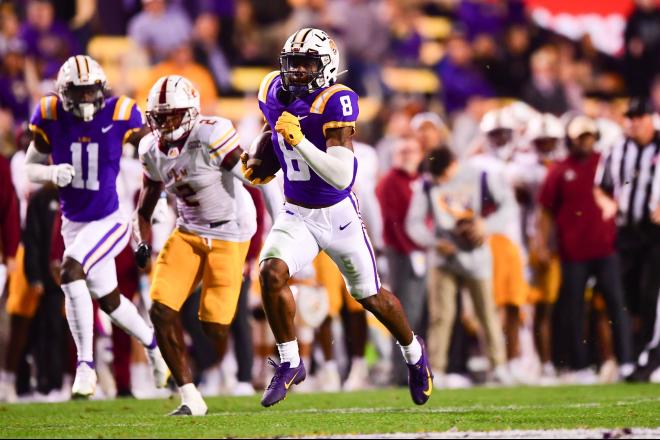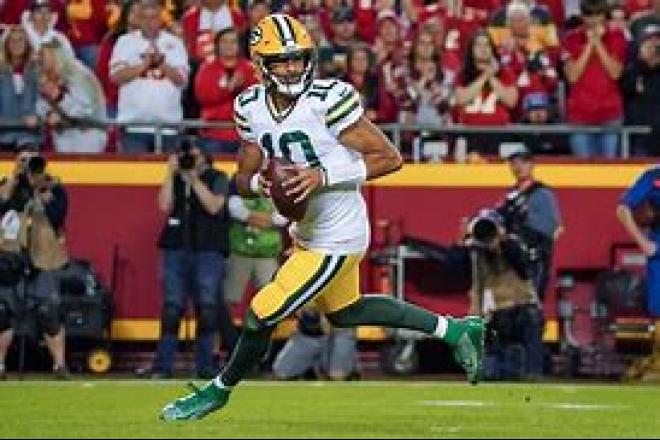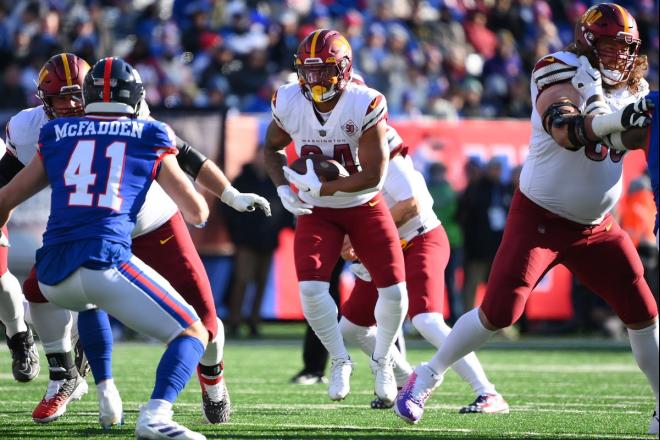Welcome back to another enthralling chapter of Dynasty Diaries, where I unravel the intricacies of dynasty fantasy football. In this edition, we'll explore the art of Injury Management – an unavoidable facet of the game that tests resilience and strategic acumen as a dynasty manager. Join me on this journey as we delve into how I navigate through injuries, utilize IR spots, and make decisions to maintain a competitive edge. Drawing inspiration from my previous trades, we'll see how injury management intertwines with the broader strategy of building a lasting dynasty.
In the ever-evolving landscape of dynasty fantasy football, injuries are the unwelcome guests that can disrupt the most meticulously crafted rosters. Successfully navigating through injuries requires a multi-faceted approach that involves proactive roster management, effective utilization of Injured Reserve (IR) spots, and making calculated decisions to mitigate the impact on your team's competitiveness.
Taking a cue from my earlier trades, where strategic player acquisitions were made to bolster specific positions, injury management becomes an integral part of maintaining roster depth and flexibility. Let's delve into how the art of how injury management plays a crucial role in the Dynasty Diaries saga.
Kyler Murray's Bumps and Bruises: A Case Study in My Proactive Management
In the blockbuster trade acquiring Kyler Murray, the dynamic quarterback became the linchpin of my team's success. However, in the dynamic NFL landscape, even stars like Murray are susceptible to injuries. The key to managing such setbacks is proactive roster management.
Acquiring Murray while he was injured was one of the reasons I wanted him in the first place. My experience has shown that when players are hurt for an extended length of time during the NFL season, more often than not this presents a unique buy-low opportunity. Depending on the player and specific situation, an astute manager can significantly improve his team with trades for injured players. This was the case with Murray. At the time this deal was made, Kyler was still recovering from a torn ACL from the previous year and wasn’t able to help my fantasy team for the first month after acquiring him.
In this league, however, I had depth at the quarterback position in Brock Purdy and Jordan Love, without which this move would not have been possible. This vigilance allowed me to make timely adjustments to the lineup and ensure that my team's performance didn't suffer significantly during Murray's absence. Proactive management isn't just about reacting to injuries when they happen but involves staying ahead of the curve by having contingency plans in place. Knowing your depth at specific positions on your dynasty roster is one of the major keys to being able to acquire injured players. If you have the depth to wait for the injured player to return, it’s often a wise move to attempt to acquire better talent at discounted prices.
Antonio Gibson's Nicks and Niggles: Leveraging Depth to Weather the Storm
In the trade that brought Antonio Gibson to my roster, I recognized the importance of having a robust running back corps. The unpredictable nature of the NFL means that even the most durable players can succumb to injuries. Leveraging depth at the running back position became a cornerstone of my injury management strategy. Fortunately, I dodged a major injury with Gibson, but depth is still a major key.
The great thing about roster depth is it allows you to substitute a bench player into your starting lineup who’s just as good as the starter, thereby theoretically still scoring a similar amount of fantasy points. The other benefit is it allows for additional upgrades to the roster. Even though Gibson stayed away from major injuries, he was placed on his team’s IR at one point during the year. When this occurred, I immediately placed him on my fantasy IR and kept the bench spot open.
Many experts will say to pick up another player for the empty bench spot, and that is certainly a feasible strategy. However, the problem with that is that once Gibson comes off the IR, a corresponding roster move needs to be made to activate him. That is why I like having empty bench spots. Keeping the spots empty also provided me the opportunity to continue to make 2-for-1 trades, thereby theoretically increasing my overall team value while Gibson himself was on the IR. In dynasty football, building a deep and versatile roster is not only about the starting lineup but also about having reliable options to weather the storm of injuries.
Darren Waller's Setbacks: Adapting to the Ebb and Flow
The acquisition of Darren Waller in a high-stakes trade brought an elite tight end to my roster. However, as Waller faced setbacks and injuries, it underscored the importance of adaptability in the face of the ebb and flow of a player's health. In the case of someone such as Waller, who has a lengthy injury history, depth became even more paramount.
In this specific scenario, one way I have for combating Waller’s injury is to roster his backup, who in this case was Daniel Bellinger. Generally speaking, I shy away from this strategy with running backs, but with other positions, it can be a prudent maneuver to handcuff a stud WR, QB, or TE. Rostering both Waller and Bellinger allowed me to have flexibility in case Waller missed time, while automatically having the “next man up” on the same team.
Another strategy I like to adopt in a scenario like this is trading for or picking up cheap starting options at TE, and stream them until the starter returns. For example, instead of rostering Bellinger, I could’ve picked up the starting TE on a different team (someone like Cade Otton, or Hunter Henry for example) and streamed the position while waiting for Waller to return. While this does take up a few more roster spots than I’m generally comfortable with, the advantage is twofold: A) Once Waller returns, I can simply drop the worst performer of the “streamers” & B)If one of the streamers pans out, now I have two startable TE’s that I can use as trade bait. Either way, this strategy can be a very viable option. The ability to adapt to ever-changing circumstances, both in terms of trades and injuries, is a hallmark of successful dynasty teams.
Utilizing IR Spots Strategically: A Tool in The Injury Management Arsenal
In the toolbox of injury management, Injured Reserve (IR) spots serve as a valuable instrument. In my fantasy league, which generously offers four IR spots, strategic utilization of these spots becomes crucial. When a player faces a more extended absence due to injuries, I strategically place them on IR to free up roster spots for healthy contributors, maintaining competitiveness during the injured player's recovery.
A good rule of thumb for placing a player on IR is when they are placed on the IR of their own respective NFL team. Most fantasy leagues only allow fantasy managers to place players on the fantasy IR if they are on the NFL IR.
Choosing to place a player on fantasy IR depends on a few things. If the player is slated for a backup role or isn’t relevant for fantasy purposes, generally it’s a better roster management practice to simply drop said player, as opposed to using one of the limited IR slots. This allows maximization of the utility of IR spots, ensuring that valuable roster space isn't used up unnecessarily. It's a proactive move that keeps the fantasy roster flexible and dynamic.
Another strategy with this involves keeping the players on the IR for as long as possible. For example, if a player goes on the IR and the season ends, it can be a wise move to keep that player on the IR after the season even though they are now healthy, as it provides for more roster flexibility and allows the astute fantasy manager more time to assess potential trade opportunities. Eventually, that player will need to be taken off of the IR spot. However, the idea is that by then there is an open roster spot available and the fantasy team is better through shrewd roster management, as this strategy can help the astute manager buy time to improve their team.
Knowing When to Sell or Get Rid of Injured Players: Striking the Right Balance
While acquiring injured players can be a calculated risk, knowing when to sell or get rid of them is equally crucial. If an injured player's recovery seems prolonged or their performance upon return is uncertain, it might be the right time to part ways and free up roster space for more immediate contributors. Naturally, much of this depends on the player and their fantasy relevancy. If the injured player continues to be a fantasy asset then there may not be a need to get rid of him.
However, if the player is in a situation where their future NFL outlook is in potential jeopardy or cloudy, (think Cam Akers after two torn ACLs), astute managers would be wise to cut bait as soon as possible, either via trade or dropping the player outright. Even though there is the possibility the player could return and be productive, the odds are slim. Hopefully, those managers who are looking to move an injured asset with less than favorable odds of returning can move the player for something of value.
In the ever-changing landscape of dynasty football, holding onto injured players without a clear path to impactful returns can hinder roster flexibility. Selling or dropping these players at the right time ensures that the team remains agile and adaptable to emerging opportunities.
In the tapestry of Dynasty Diaries, Injury Management emerges as a thread that weaves through every strategic decision. Proactive roster management, leveraging depth, balancing short-term impact and long-term value, strategic use of IR spots, and calculated risks with injured players are the tools in an arsenal of successful dynasty team management.
As you navigate the twists and turns of injuries, recognize that managing setbacks is as much a part of the journey as making savvy trades. The Dynasty Diaries saga continues, and the next chapter awaits – entitled "Winning Culture": where we will discuss the importance of team culture, camaraderie, and the intangibles that contribute to success and the relentless pursuit of a long-lasting dynasty. Until then, may your rosters stay healthy, and your dynasty aspirations thrive. Happy managing!





